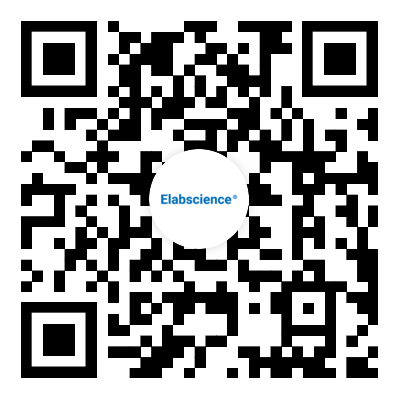Recombinant Mouse IL-36RA protein(His Tag)
Price:
- 表达系统: E.coli
- 蛋白编码: Q9QYY1
- 应用性: Cell culture
| 别称 |
Interleukin-27 subunit alpha;IL-27-A;Interleukin-27 subunit beta;IL-27B;Epstein-Barr virus-in?duced gene 3 protein;EBV-induced gene 3 protein;EBI3;p28;Interleukin-30;IL-30
|
| 表达系统 |
E.coli
|
| 序列 |
Met 2-Asp 156
|
| 蛋白编码 |
Q9QYY1
|
| 种属 |
Mouse
|
| 计算分子量 |
17.8 kDa
|
| 表观分子量 |
17-25 kDa
|
| 标签 |
C-His
|
| 生物活性 |
Measure by its ability to inhibit IL-36 gamma-induced IL-6 secretion in 3T3 cells. The ED50 for this effect is <2 μg/mL.
|
| 纯度 |
> 98 % as determined by reducing SDS-PAGE.
|
| 内毒素 |
< 0.1 EU per μg of the protein as determined by the LAL method.
|
| 保存条件 |
Generally, lyophilized proteins are stable for up to 12 months when stored at -20 to -80℃. Reconstituted protein solution can be stored at 4-8℃ for 2-7 days. Aliquots of reconstituted samples are stable at < -20℃ for 3 months.
|
| 运输条件 |
This product is provided as lyophilized powder which is shipped with ice packs.
|
| 制剂 |
Lyophilized from sterile PBS, pH 7.4.
Normally 5% - 8% trehalose, mannitol and 0.01% Tween 80 are added as protectants before lyophilization. Please refer to the specific buffer information in the printed manual. |
| 复溶方法 |
Please refer to the printed manual for detailed information.
|
| 背景 |
Human Interleukin-36 Receptor Antagonist (IL-36RN) is a secreted protein which belongs to the Interleukin 1 cytokine family (IL-1 family). IL-36RN is predominantly expressed in keratinocytes but not in fibroblasts, endothelial cells or melanocytes. IL-36RN is also detected in the spleen, brain leukocyte and macrophage cell types. Increased in lesional psoriasis skin. IL-36RN is a highly and a specific antagonist of the IL-1 receptor-related protein 2-mediated response to Interleukin 1 family member 9 (IL1F9). Dysregulated expression of novel agonistic and antagonistic IL-1 family member ligands can promote cutaneous inflammation, revealing potential novel targets for the treatment of inflammatory skin disorders. Human and mouse IL-36RN share 90% sequence identity.
|
实验操作视频
新品推荐
Recombinant Human IL-6 Protein (Fc Tag)
Recombinant Mouse BCR protein (His tag)
Recombinant Mouse IL6 protein(His tag)
Recombinant Rat IL2/IL-2/Interleukin-2 protein (His tag)
Recombinant SARS-CoV-2 Nucleocapsid Protein (His Tag)
Recombinant Human Fyn protein(His tag)
Recombinant Mouse CD96/TACTILE protein (His tag)










